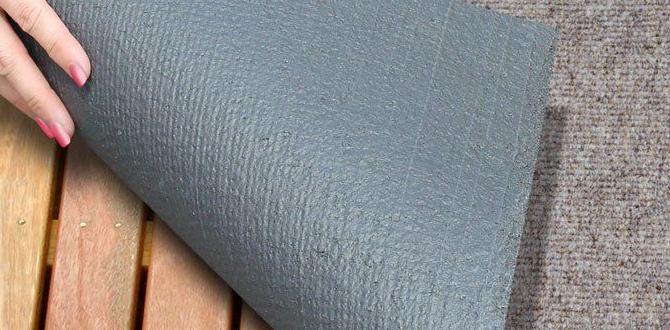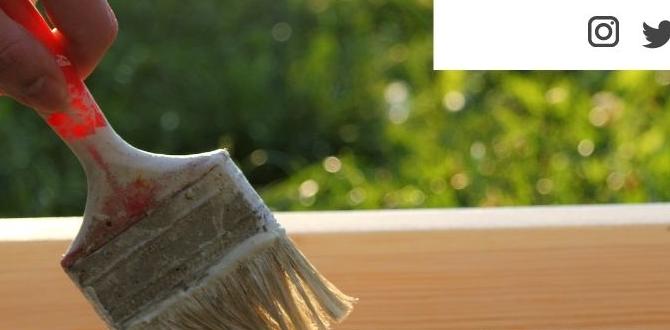Have you ever wondered what happens to rice hulls after we enjoy a delicious bowl of rice? Most people throw them away, but these little pieces can work wonders in your garden!
Rice hulls are the hard protective coverings of rice grains. They are lightweight and often discarded, but they hold amazing benefits for plants. Did you know they can help your garden soil breathe and hold more water? This can lead to healthier plants and even bigger vegetables!
Imagine growing fresh tomatoes or vibrant flowers using a simple material that would usually end up in the trash. How cool is that? Plus, using rice hulls can help reduce waste and improve your garden at the same time. Keep reading to discover how to use rice hulls for gardening and why they might just be your new favorite gardening secret!
Rice Hulls For Gardening: Benefits And Uses Revealed
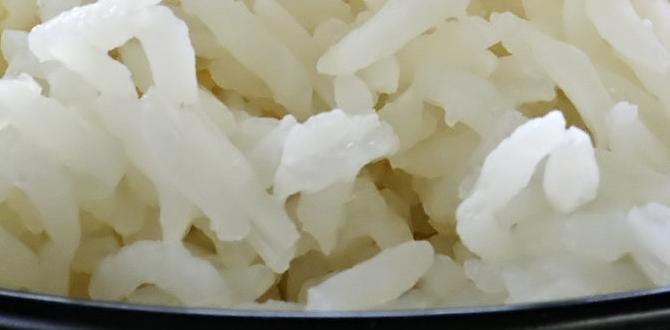
Rice Hulls for Gardening
Rice hulls are a fantastic resource for gardeners. They help improve soil drainage and aeration. This can lead to healthier plants and better crop yields. Did you know that rice hulls are also an organic mulch? They protect soil from weeds and retain moisture. Plus, they break down slowly, enriching the soil over time. Imagine your garden thriving with such an eco-friendly option! Using rice hulls can make gardening easier and more rewarding.What are Rice Hulls?
Definition and composition of rice hulls. Brief history and sources of rice hulls.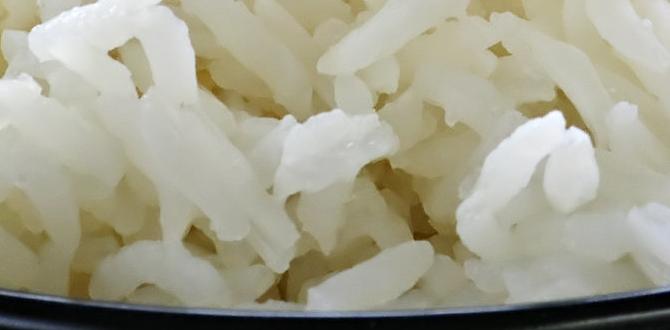
Rice hulls are the outer coverings of rice grains, often thought of as trash by farmers. They are mostly made of silica, making them tough and light. Historically, these hulls were tossed aside, but now, they’re celebrated for their gardening magic! Farmers in Asia have used rice hulls for hundreds of years, turning what used to be waste into a clever resource. Who knew trash could be so useful? It’s like finding gold in your backyard!
| Composition | Usage History |
|---|---|
| Silica, cellulose, lignin | Used in Asia for centuries |
Benefits of Using Rice Hulls in Gardening
Improved soil aeration and drainage. Nutrient retention and enrichment properties.
Using rice hulls in your garden is like giving your plants a spa day! These little hulls improve soil aeration, allowing roots to breathe and grow better. Plus, they help with drainage, so you won’t need to worry about soggy soil in rainy weather. Rice hulls are also great at holding nutrients, giving your plants a tasty buffet. If only they could serve salad too!
| Benefits | Description |
|---|---|
| Soil Aeration | Help roots get air. |
| Improved Drainage | Prevents flood-like conditions. |
| Nutrient Retention | Keeps nutrients available. |
How to Incorporate Rice Hulls into Your Garden
Methods for mixing rice hulls with soil. Recommended ratios for different plants.Mixing rice hulls into your garden soil is easy and fun! Here’s how you can do it:
- Start by gathering your rice hulls and soil.
- Mix rice hulls with soil in a container or directly in your garden bed.
- A good ratio is 1 part rice hulls to 3 parts soil for most plants.
- For plants that need more drainage, like succulents, use 1 part rice hulls to 2 parts soil.
- For seed starting, mix 1 part rice hulls to 1 part soil.
This will help your plants grow strong and healthy!
What are the benefits of using rice hulls in gardening?
Using rice hulls in your garden can improve soil aeration and water retention. They also help in keeping the soil light and fluffy. This makes it easier for roots to grow and absorb nutrients.
How often should I add rice hulls to my garden?
Add rice hulls to your garden once a year in the spring. This helps refresh the soil and keeps it healthy for your plants.
Rice Hulls as a Mulch: Pros and Cons
Advantages of using rice hulls as mulch. Potential downsides and considerations.
Using rice hulls as mulch has some great benefits. They help keep the soil moist and reduce weeds. Plus, they are light and easy to work with. Here are some advantages:
- Retains moisture – Keeps the soil from drying out too fast.
- Reduces weeds – Blocks sunlight and stops weed growth.
- Environmentally friendly – Made from agricultural waste.
However, there are some downsides to consider. Rice hulls can blow away easily. They may also attract pests if not monitored. Always check your garden to ensure it’s healthy!
What are the main benefits of rice hulls for gardening?
Rice hulls help improve soil health, retain moisture, and control weeds.
Comparing Rice Hulls to Other Mulching Materials
Rice hulls vs. straw, wood chips, and bark. Costeffectiveness and availability comparison.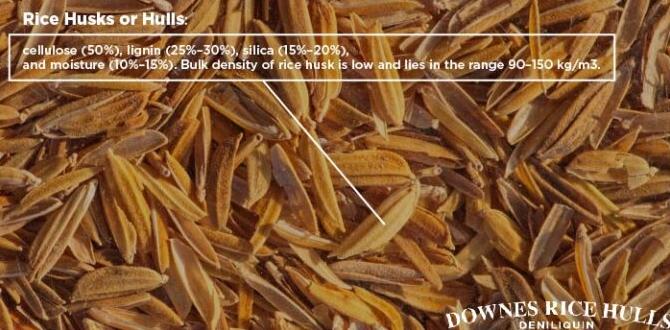
Different mulching materials can help your garden, but they all have unique benefits. Rice hulls stand out in some ways. Here’s how they compare:
- Rice Hulls: Lightweight and great for aeration. They cost low because they are often available from local rice mills.
- Straw: Useful for keeping weeds away, but it can attract pests. Straw is affordable but may not last as long.
- Wood Chips: Good for moisture retention. However, they decompose slowly, which means they can be pricey over time.
- Bark: Durable and prevents weeds but can be costly and harder to find in some areas.
Rice hulls are effective and budget-friendly. They help your garden stay healthy while being easy to find. Remember to check your local resources for the best deals!
What are the benefits of using rice hulls in gardening?
Rice hulls offer excellent drainage and aeration. They are lightweight, making them easy to spread. Plus, they break down slowly, enriching the soil over time.
Environmental Impact of Using Rice Hulls
Sustainability and waste reduction aspect. Carbon footprint analysis.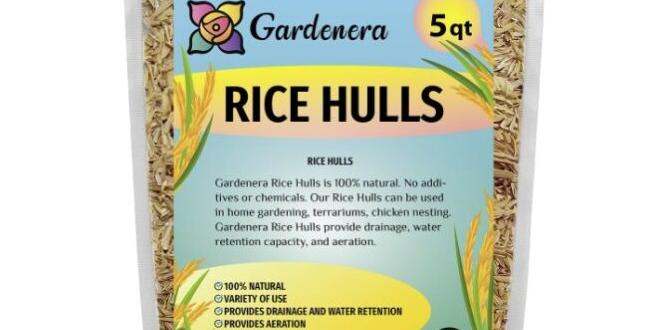
Using rice hulls in gardening helps the environment in many ways. They sustainably reduce waste that would normally go into landfills. Instead of throwing away rice hulls, people can use them to improve soil and plant growth. This choice also lowers the carbon footprint since less energy is needed for disposal. Additionally, rice hulls can store carbon, helping to fight climate change.
- Reduces waste in landfills
- Decreases energy use
- Helps store carbon
How do rice hulls help with sustainability?
Rice hulls provide natural materials for gardening, which reduces the need for synthetic products. This leads to healthier plants and a cleaner planet.
Rice Hulls and Specific Plants: Best Practices
Recommendations for vegetable gardens. Tips for flower and ornamental gardens.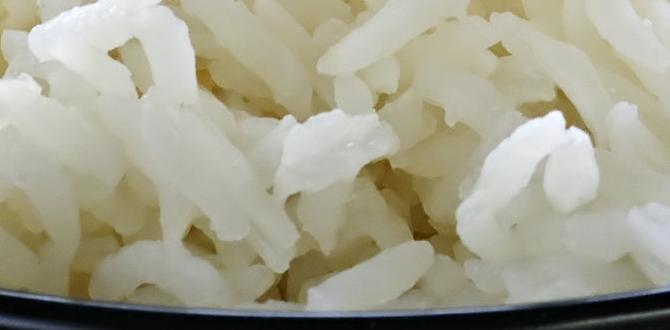
Want to boost your garden with some amazing rice hulls? For vegetable gardens, sprinkle them around leafy greens and root veggies. They help with drainage and keep soil light. Plus, they might keep pesky weeds away!
In flower and ornamental gardens, mix rice hulls into the soil for better aeration. They give your blooms a smile too! Remember to keep the hulls near the roots, not just on top. They won’t hold hands with weeds either!
| Garden Type | Best Practices with Rice Hulls |
|---|---|
| Vegetable | Improve drainage; use around plants |
| Flower/Ornamental | Mix with soil; aerate the roots |
FAQs About Rice Hulls in Gardening
Common questions and misconceptions. Expert answers and guidance for gardeners.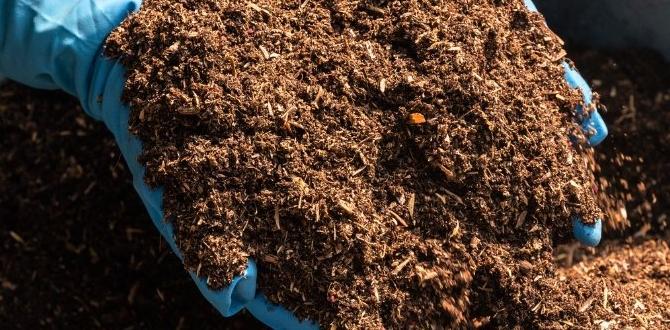
Many gardeners have questions about using rice hulls. Here are some clear answers to common misconceptions.
Can rice hulls improve soil health?
Yes, rice hulls add aeration and drainage. They help soil retain moisture without becoming too compact.
Are rice hulls better than mulch?
Both have benefits! Rice hulls break down slower than organic mulch, lasting longer in your garden.
Do rice hulls attract pests?
No, they are not a pest magnet. Most pests prefer more organic material. Rice hulls keep your garden cleaner.
How do I use rice hulls in my garden?
- Mix them into soil for better texture.
- Use as a top layer to reduce weed growth.
- Add to compost to balance moisture.
Rice hulls can be an excellent part of your gardening toolkit. Explore them today!
Conclusion
In summary, rice hulls are great for gardening. They improve soil aeration and help retain moisture. You can also use them as mulch or compost. Using rice hulls can make your garden healthier and more productive. If you want to learn more, check out gardening books or articles about natural soil amendments! Your plants will thank you!FAQs
Sure! Here Are Five Questions Related To Using Rice Hulls For Gardening:Sure! Rice hulls can help your garden by improving the soil. They make the soil lighter and help it hold water. You can also use them to stop weeds from growing. Plus, rice hulls break down over time and add nutrients to your plants. They’re a great choice for gardening!
Sure! Please share the question you’d like me to answer.
What Are The Benefits Of Using Rice Hulls As A Soil Amendment In Gardening?Using rice hulls in gardening helps improve soil. They make the soil lighter, which helps roots grow better. Rice hulls also hold water, so plants stay hydrated longer. Plus, they add good nutrients to the soil over time. Overall, using rice hulls can lead to healthier plants and a more productive garden!
How Do Rice Hulls Improve Soil Aeration And Drainage Compared To Other Organic Materials?Rice hulls help air move through the soil better. They have a light and fluffy structure, which creates space for air. This makes it easier for water to drain away, preventing sogginess. Other organic materials, like leaves, can pack down and limit air flow. So, rice hulls are great for keeping soil healthy and free from too much water.
Can Rice Hulls Be Used As A Mulch In Garden Beds, And If So, How Do They Affect Soil Temperature And Moisture Retention?Yes, you can use rice hulls as mulch in your garden beds. They help keep the soil cooler when it’s hot outside. Rice hulls also help the soil hold water better, so plants can drink more. This makes your garden healthier and can help your plants grow strong.
What Are The Potential Drawbacks Or Considerations To Keep In Mind When Using Rice Hulls For Gardening?Rice hulls can be a bit light, so they might blow away in the wind. They also break down over time, which means we need to add more to our garden. Sometimes, rice hulls can be hard for tiny plants to grow in because they don’t hold water well. Lastly, if they are not cleaned properly, they might have leftover chemicals from farming. So, we should check them out carefully before using them!
How Can Rice Hulls Be Incorporated Into Composting Systems, And What Role Do They Play In Balancing Carbon And Nitrogen?You can add rice hulls to your compost pile easily. They help mix with other materials like kitchen scraps and yard waste. Rice hulls are high in carbon, while food scraps are higher in nitrogen. By adding both, you create a balanced mix that helps the compost break down better. This means your compost will turn into rich soil faster!




